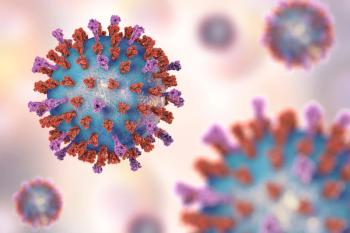
Seborrheic Dermatitis and HIV: Common, Severe
Among the general population, roughly 5% of people develop seborrheic dermatitis. However, seborrheic dermatitis affects 85-95% of patients with HIV.
Among the general population, roughly 5% of people develop seborrheic dermatitis. However, seborrheic dermatitis affects 85-95% of patients with HIV, and usually starts when their CD4 counts drop to the 450-550 cells/mcL range.
This scaling, inflammatory skin disease may flare and subside over time. Patients have itchy, reddish or pink patches of skin covered by greasy flakes or scales that are yellowish and adhere to the skin. It most often occurs on the scalp and face, especially at the nasolabial folds, eyebrows, and forehead. The ears, chest, upper back, axillae, and groin may be affected as well.
Severe disease—dermatitis that involves large areas of the body and may be treatment-resistant—is more probable with advanced HIV infection.
A case review series published in March 2016 in the International Journal of STD and AIDs discusses 20 patients with HIV who also had seborrheic dermatitis.
Several factors associated with seborrheic dermatitis put patiens with HIV at elevated risk: overgrowth of the Malassezia yeast in the oily skin environment, immune system failure, and the skin's inflammatory reaction to yeast overgrowth.
Treating seborrheic dermatitis can be difficult even in mild-to-moderate disease. Patients may need to use oral and topical antifungals and corticosteroids for long durations. If superinfection occurs, they may need antibiotics.
The general treatment progression should start with antifungal topical. Many patients will also need topical corticosteroids. Next, prescribers can try topical calcineurin inhibitors (tacrolimus and pimecrolimus).
Patients who do not respond to topical treatment will need oral therapy with antifungals. Pharmacists will need to check for drug interactions carefully, as most antifungals and antivirals affect the cytochrome P450 system.
This case series demonstrates the difficulty of dealing with seborrheic dermatitis in the HIV-infected population, such as the numerous drug interactions between antivirals and antifungals.
The authors concluded that if any patient presents with severe or diffuse seborrheic dermatitis, clinicians should have a high index of suspicion for HIV infection too.
Reference
Forrestel AK, Kovarik CL, Mosam A, Gupta D, Maurer TA, Micheletti RG. Diffuse HIV-associated seborrheic dermatitis - a case series. Int J STD AIDS. 2016;27(14):1342-1345.
Newsletter
Stay informed on drug updates, treatment guidelines, and pharmacy practice trends—subscribe to Pharmacy Times for weekly clinical insights.




